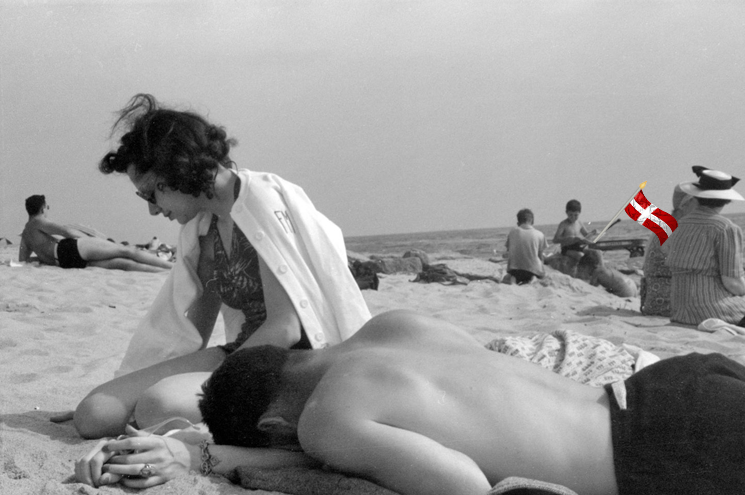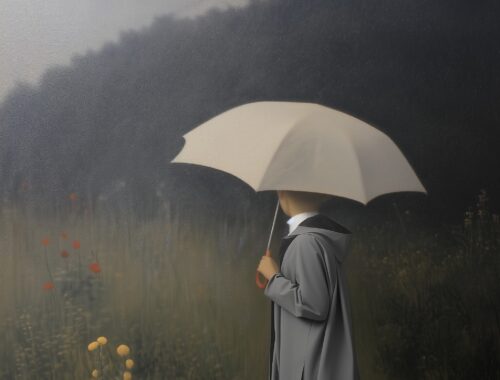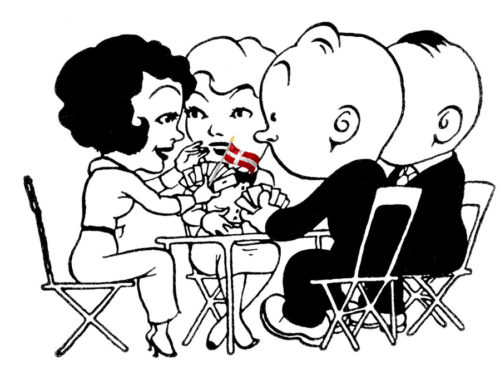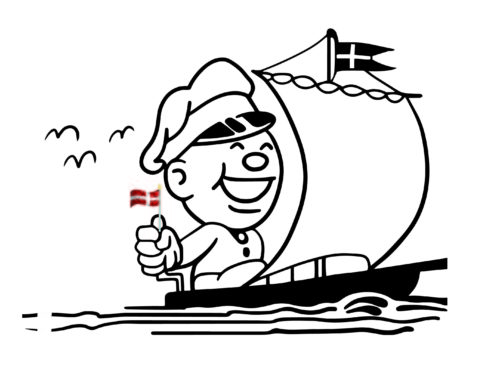We’re coming up on June 21, the longest day of the year in the Northern Hemisphere.
Here in Denmark it starts getting light at 4 in the morning, and the sun doesn’t go down until 10 or so at night, then returns again around at 4 in the morning.
In between it never gets really dark, just like in December it never gets very light.
The light times can be annoying
During the long, Danish winter, I wait and wait for the light times to come. Sometimes I count – only 3 more months until the light times! Only 6 more weeks until the light times!
When the light times do get here, they’re actually kind of annoying. Sure, it’s great to have some sun, and some long, summer evenings to enjoy the rare good weather. Danish nature is at its best in the early summer: the leaves on trees are plentiful and a deep, dark, green; the grass is thick, and every bit of roadside is speckled with white, yellow, or purple wildflowers.
But with all that light, it’s kind of difficult to sleep.
Light pouring in the windows until 11pm can be exhilarating on a Saturday night, but not so great on a Tuesday when you have a 9am meeting the next day.
Sleep masks and eager construction workers
Everyone I know in Denmark has blackout curtains and wears sleep masks to cover their eyes in bed. These methods don’t always work, though, particularly when it’s hot. As June rolls on, people start to get a bit crabby after weeks of limited sleep.
It doesn’t help that Danish construction workers like to take advantage of the extra hours of daylight to start their work bright and early.
The team working outside my house has been noisily moving their equipment into place between 5 and 6, and then perhaps stopping for a bit of breakfast before firing up their big power drills shortly before the legally allowed time of 7am.
Rediscovering your neighbors
When summer begins you get to see your neighbors again, after waving to each other at a distance all winter. At first glance, their kids often look giant.
They’ve packed away all through the winter season in snowsuits and boots and hats and when you see them unwrapped, they’re entirely changed.
The baby of last October is now walking and riding a little bike. The skinny teenager you knew before parka season now has broad shoulders, a deep voice and quite possibly a six-pack of Carlsberg beer.
Sankt Hans Day, my least favorite Danish holiday
June is also the time of year for my least favorite Danish holiday, Sankt Hans day. Sankt Hans – which I just found out today is the Danish name for St. John the Baptist – takes place on June 23 each year.
It’s Denmark’s version of the summer party that takes place in most countries at some point. There’s beer, outdoor grilling, mosquitos.
What rubs me the wrong way is the big finale of the Sankt Hans party, the “burning of a witch”, as part of a bonfire. In urban areas, the bonfire is often set on a little platform out in a lake, to keep things from getting out of hand.
A straw woman is placed on top of the bonfire and set alight.
Interestingly, the “burning of the witch” in Denmark doesn’t date back to Denmark’s actual centuries of gruesome witch hunting, including the well-known burning at stake of tailor’s wife Maren Spilds in 1641.
It’s a newer tradition, adopted from Germany in the late 19th century.
Danish people assure me that the whole burning-up-a-lady thing is no problem whatsoever. It’s just a Sankt Hans tradition, like group singing one of the multiple versions of Vi elsker vort land, aka the Midsummer song.
Anyway, I usually stay home for Sankt Hans day.
Buy Kay’s books about Denmark on Amazon, Saxo, Google Books, Apple Books, Barnes & Noble Nook, or via our webshop.
Image mashup copyright Kay Xander Mellish 2025
Read also:
Danish summer: Why you should run outside now
Summerhouse or doll house: What to expect if you’re invited to a Danish summer home
Summer vacation in Denmark: The Agony and the Ecstasy
Danish beaches in winter: White light and bitter wind
More Snow Tomorrow: Surviving Winter as a Foreigner in Denmark
Danes and Spring: Hot wheat buns and highly-educated drunks
Autumn in Denmark: The Slow Fading of the Light





